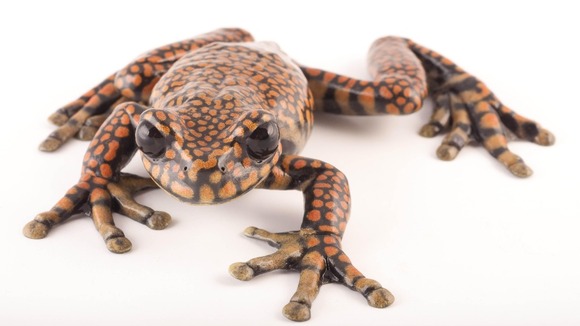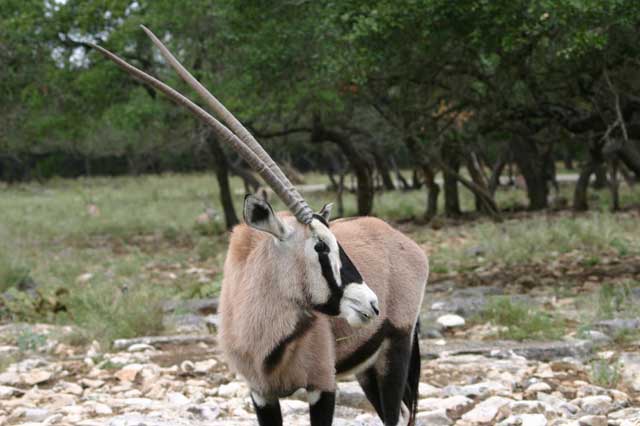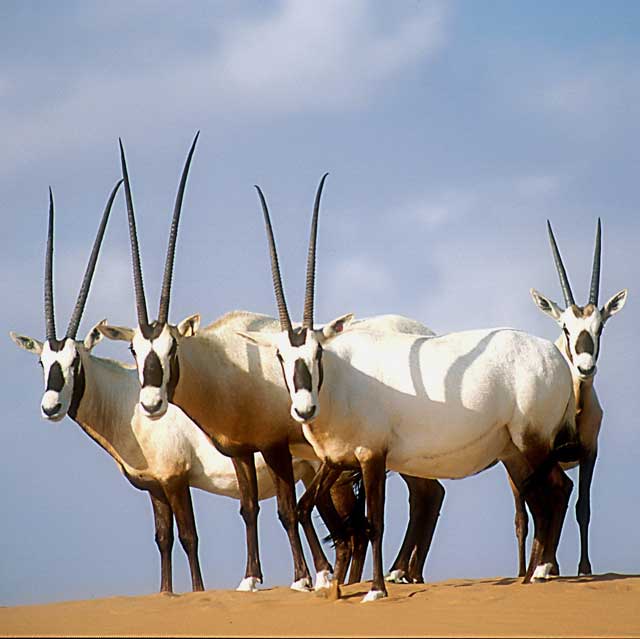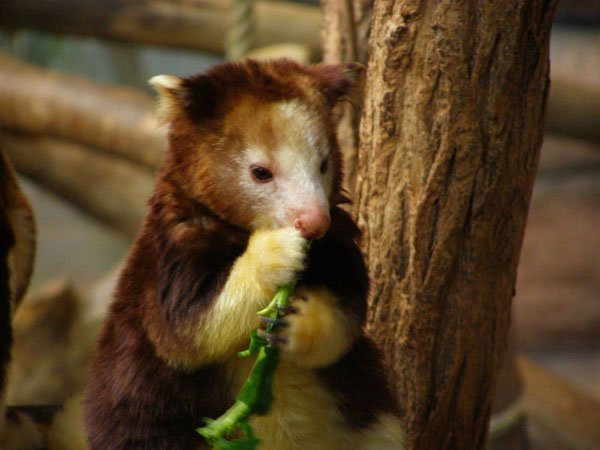Earlier this year we asked you what colour you think a polar bear is? The answer is pretty surprising! Polar bear hair is actually mostly clear and their skin is black! So how come they look white? We asked some top scientific minds to explain it to us. Their answer takes us deep into the world of what Polar bear hair is made of and on an exploration of optics, which is the science of light and vision.
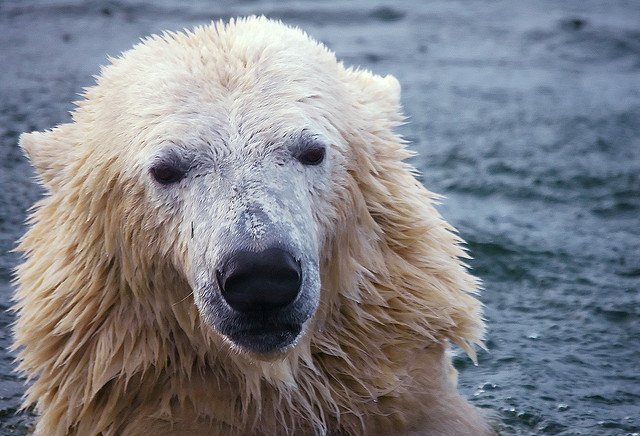
What Makes Up Polar Bear Fur?
A Polar bear’s coat has two layers of hair: an outer layer, made up of long (5-15cm) guard hairs; and a thick undercoat, made up of shorter hair.
These guard hairs are mostly transparent or clear, but thanks to some special characteristics that work to create cool optical tricks, these hairs appear white. Here are the special characteristics of guard hairs: they are coarse, tapered (gradually come to a point) and have a hollow core filled with air; they are made of a protein called keratin; they have light scattering particles inside them; and have tiny salt particles that sit between each hair.
The Power of Optics!
All of these special characteristics of a Polar bear’s guard hair work with the power of light to make Polar bears appear white. Here’s how:
Luminescence
When the sun’s rays hit off of the Polar bear’s transparent guard hair, some of this light energy travels into the hair and gets trapped. This energy bounces around inside the hollow part of the hair causing a reaction called luminescence, which is an emission of light. This happens every time the beam of light makes contact with the side of the hair.
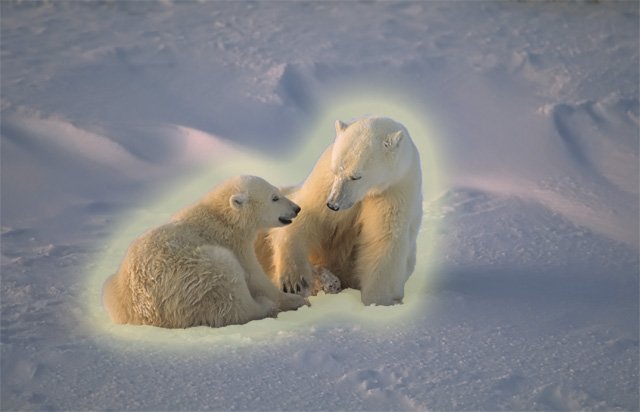
This luminescence is accelerated by light scattering particles. If you were to look at a Polar bear’s guard hair really closely through a super microscope, you could see tiny little bumps – these are the light scattering particles. As the light bounces around in the hollow guard hair it hits these particles, which disrupts the beam of light causing it to break up into more beams that are sent off in different directions. The beams continue to bounce around, creating more luminescence until they reach another light scattering particle and the process happens all over again. All this bouncing light inside the guard hair causes whitish light to be given off by the hair, helping the Polar bear look white and blend into its Arctic snow and ice environment!
Light scattering particles aren’t only found on the inside of the hairs, there are also particles found on the outside. Polar bears pick up salt particles from swimming or being near the salty ocean water. These salt particles, along with the hairs’ coarse surface, also act as light scattering particles that cause even more beams of light to bounce around creating more luminescence.
UV light

Light travels in waves that scientists call wavelengths. The human eye can only see certain wavelengths of light, like red, orange, yellow, green, blue, indigo and violet (making up the acronym ROY G. BIV). Each colour has a slightly shorter wavelength than the one that comes before it. This light is part of the visible spectrum, but there are more forms of light that we can’t see. The light that is important for helping us understand Polar bear fur comes after violet. It is called ultraviolet light, something you might know as UV light. UV light has a wavelength that is too short for humans and other mammals to see, but it is still found in sunlight which is one reason you get a sunburn and why having high UV protection in sunscreen is so important.
When sun shines on a Polar bear, the UV in the sunlight shoots down to the base of the guard hair, where it makes contact with the bear’s dark skin. When the UV light hits the skin it produces a whitish colour due to fluorescence.
Keratin protein
Planet Earth is rich with keratin. It is the most common protein in the world and is found in your skin, nails and hair. Just like you, Polar bears have keratin in their hair too. These protein molecules have a slight off-white colour, which further contributes to Polar bear fur appearing white.
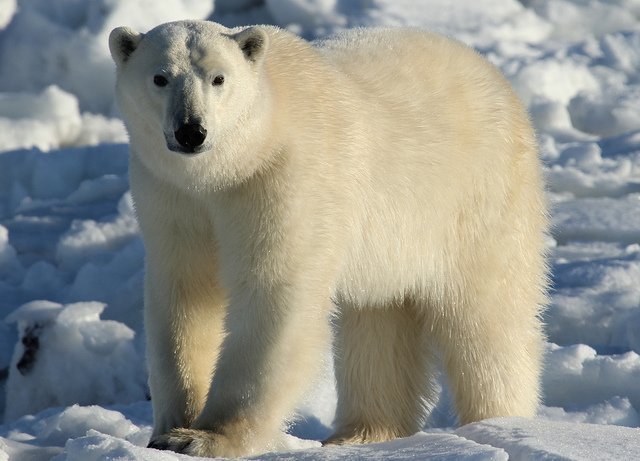
So What Colour Are Polar Bears?
Polar bears are white, but their hair is mostly clear! To recap … when light shines on the Polar bear’s mostly clear guard hair, some light gets trapped in the hair and bounces around, creating luminescence. When it hits a light scattering particle on the inside or salt on the outside, the light breaks up even more and gets sent in all different directions. This light scattering gives off more white-coloured light due to luminescence. UV light also gets transmitted along the guard hairs onto the bear’s dark skin, causing florescence and don’t forget about the keratin protein whose molecules give off a slight white colour. Each of these elements brings you the white Polar bear you know and love.
Now that we know why Polar bears look white, we’re sure you are wondering why some Polar bears might look a little yellow or slightly brownish. Interestingly, with changes in habitat, their fur as it ages over the year, and the time of year, there can be slight differences in their fur’s colour, which helps them blend into their environment. In the late fall and winter, when Polar bears lose their old fur and grow new hair, they tend to appear more white than several months later in the summer when their hair can take on a yellowish tinge from wear on the fur. Those living on ice far away from open water appear whiter than bears that spend a lot of time swimming. On the other hand, Polar bears on land where there is little or no snow have slightly light brown fur.
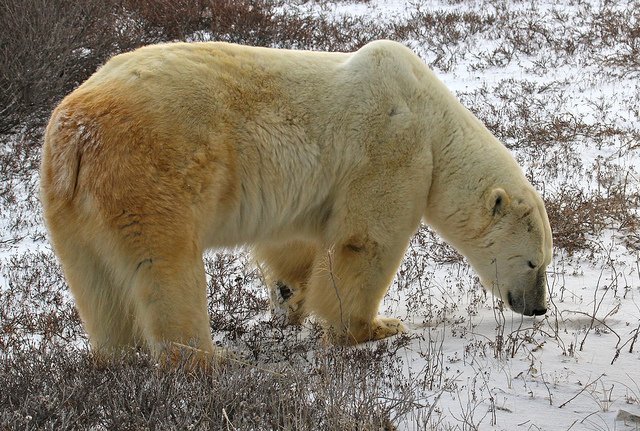
Polar bears are amazing animals that are so well adapted to their Arctic home! Today, Polar bears are facing threats and their incredible hair and optical tricks aren’t enough to save them. They need your help! Start a Bring Back the Wild campaign and take action to help save the Polar bear.
References:
http://wiki.answers.com/Q/What_color_is_the_polar_bear’s_skin
Tributsch et al. 1990. Light collection and solar sensing through the polar bear pelt. Solar Energy Materials 21:219-236).
If you think animals are amazing, the Earth Rangers Podcast is for you!
Join Earth Ranger Emma as she travels the world on a quest to solve some of nature’s greatest mysteries! With top ten countdowns, animal guessing games and epic animal showdowns, this is a journey you won’t want to miss!




